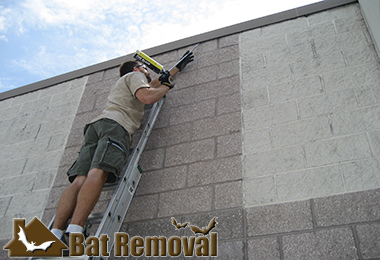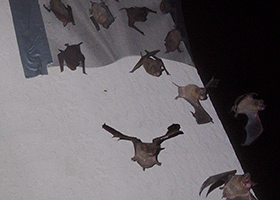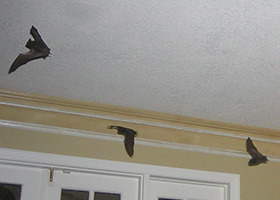Fairfield County Bat Removal
Welcome to Fairfield County Bat Removal! We are Connecticut bat removal specialists. It is important to know that bats are protected by Connecticut law, and are beneficial animals to have in the environment. We do not kill any bats during our bat removal process. Never hire a pest control company or anyone who says they are a Fairfield County bat exterminator. For correct and effective bat removal, you want a company that specializes in humane bat colony extraction. Our process is not only the only legal method in Connecticut, but it is the most effective. We have a 100% success rate in our bat control process. We perform our industry-best 32-point inspection of your house or building, and seal shut all bat entry holes down to 1/4 inch as part of the removal process, during which we remove the colony via special one-way exclusion devices specific to your architecture. Once all bats are safely out, we permanenetly bat-proof the structure. We also provide guano (bat droppings) removal and decon. Click on our Fairfield County Bat Control Prices page to find out more about our prices for bat control work. We work 24/7/365, and would love to talk to you about your bat problem. Call us any time at 203-930-3020 to discuss it, discuss our pricing, and if you wish, set up an appointment at your convenience, often same-day.

Fairfield County Building and Attic Inspections

No-kill Connecticut Bat Extraction

Guano Cleanouts - Serving all of Connecticut
Call 24/7 to discuss your bat problem.
Same-day or next-day appointments.
32-point inspection of your property.
Written estimates for bat removal project.
Fully state licensed and insured.
Residential and commercial service
100% no-kill Fairfield County bat extraction
Complete bat-proofing of your building
Compliance with all Connecticut, federal laws
Guano removal and attic decontamination
Our Service Range - 203-930-3020



Top 5 Materials in Excluding Bats
Excluding the bats in our house will require sealing potential entry points that the bats can use to invade our house. Bats are tiny creatures and can squeeze their body in a hole with a diameter of a quarter to half an inch. Sealing this with appropriate materials can lead to a long-term solution. You should also pay attention on the material used in manufacturing the excluding device. Avoid using pesticides since this can increase the likelihood that the bats will come in contact with pets and homeowners. It is also deemed illegal in most states. Therefore, exclusion device is a better solution.
Best Materials to Use in Excluding Bats
Exclusion device can be made from different materials. In this article, we will discuss the different materials that can be used as an exclusion device. Here are some of them.
1. Pipes
Pipes are perhaps the better exclusion device. You can simply install it on the hole of the building with a rough surface. If the exterior part of the wall is made up of stone walls and cabins, pipes can be introduced especially the holes that are found in the corner of the house such as the soffits. The smooth surface of the pipe will prevent the bats from roosting.
2. Tubes
If you don't have a pipe, the tube would be an excellent alternative. You may use an empty caulk tube. Simply cut both ends and clean it before using this as an exclusion device. Since it is made from soft plastic, it enables you to squeeze one part of it to fit it perfectly to the hole.
3. Polypropylene Netting
If you plan to use a polypropylene netting as your exclusion device, make sure that the mesh will not be more than 1cm. Simply attach the three corners of the screen on the surface. The forth corner should hang open that will allow the bats to exit.
4. Exclusion Funnels
Just like the pipes, the exclusion will have a smooth surface that will prevent the animal from clinging. The bigger opening should be attached to the hole and the narrow part will lead outside. Some people will even place a bait outside that will encourage the creature to leave their property.
5. Supplemental Materials
Apart from the exclusion device, you will need supplemental materials to ensure that the exclusion process will be a success. Some of the materials you will need include insulation material, screening, flashing, and caulking. The materials needed will depend upon the size, location, and the number of entry points in your property. For instance, caulking device would be recommended to use on cracks that developed through ages. It comes with various types such as the elastomeric that can withstand high temperature.
Exclusion devices that are installed at the right season and time of the year will allow the bats to leave but will prevent the re-entry. This is the most acceptable form of bat control method. It can be created or manufactured using different materials.

